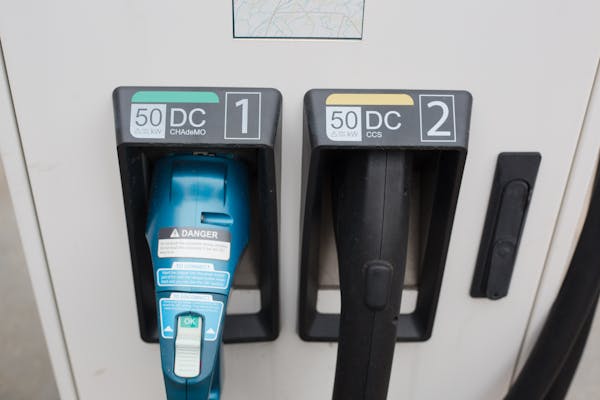The Minnesota Department of Transportation took four years to carry out a $240 million project to rebuild Interstate 35W between downtown Minneapolis and 43rd Street.
New concrete was put down to replace 50-year-old pavement. A new transit station was built at Lake Street. Nearly a dozen bridges were rebuilt or refurbished. Ramps were put in at 28th and Lake streets. Special lanes for carpools, motorcycles and buses were added, as was a new transit station in the center of the freeway at Lake Street.
And the biggest change came in the form of a rebuilt flyover bridge taking drivers from northbound I-35W to westbound Interstate 94. The new bridge now deposits drivers in their own lane on the left side of I-94. With the old ramp, motorists crossed over I-94 then entered on the right side of the freeway and were forced to merge into traffic.
When the project was first announced, MnDOT said the goal was to reduce congestion, increase mobility and provide quicker travel times along one of the busiest stretches of highway in the state.
Drive reader Reed wonders if that was really accomplished.
He asked because southbound I-35W has three lanes and a recommended speed limit of 50 mph on the curve where it breaks away from I-94 and goes into south Minneapolis. Traffic generally flows fairly well.
The problem is on northbound I-35W. Drivers heading into downtown Minneapolis and to westbound I-94 are assigned to the left three lanes. Meanwhile, motorists continuing north on I-35W or trying to get to eastbound I-94 are squeezed into two lanes and forced to navigate a curve with a 35 mph suggested speed limit.
"This 35 mph curve causes major traffic backups during rush hour," Reed said in an e-mail, noting he was caught in a traffic jam on a recent Wednesday afternoon. "Seems dangerous as drivers try to merge at the last minute to the two lanes."
The northbound curve on I-35W is much tighter than on the southbound lanes, and the smaller radius requires a lower speed limit. Redesigning those lanes to be more like the southbound curve would have been too expensive, said Anne Meyer, a MnDOT spokeswoman.
The agency would have had to purchase property and remove some apartment buildings to make room for a less severe curve, she said.
"That decision would have also impacted existing infrastructure and caused changes to some nearby city streets and bridges, on-ramps and the tunnel that I-94 goes through under 35W, adding significant costs to the project and impacts to the community," Meyer said.
So has the project been a success? Only time will tell. One thing is for sure, motorists will experience more traffic at the interchange. State transportation officials project a big increase in I-35W traffic, up to 257,700 vehicles a day in the area by 2038. That compares with 145,500 today, according to MnDOT traffic data.

Fall or spring, it's Rochester Mayo's year in prep tennis

Minneapolis reaches $150k settlement with eyewitness of George Floyd's murder

Israel-Hamas war creates 'really fraught times' at Minn. colleges

Rare and fatal brain disease in two deer hunters heightens concerns about CWD

